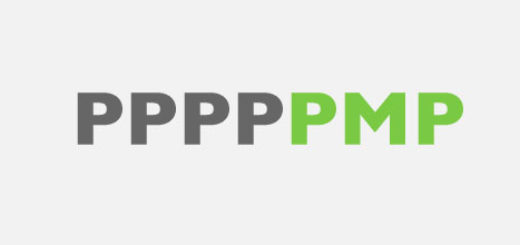Contingency Reserve vs Management Reserve for PMP Exam

Reserve, by definition, is the money set aside for unexpected events / contingencies / risks so that the project will still have enough funding to carry on. Setting aside reserves is one of the most important measures to manage project risks. In PMBOK® Guide, reserves can be sub-divided into 2 type: Contingency Reserve and Management Reserve. This post will try to distinguish between the two types of reserves.
Article Highlights
Contingency Reserve vs Management Reserve
- Contingency Reserve: contingency reserves are money added to the project cost estimates by the project manager for uncertain events / risks that might happen (also known as “known unknowns”).
- to manage identified risks
- the amount is calculated based on risk management techniques defined in the risk management plan (e.g. Expected Monetary Value (EMV) or Decision Tree Method)
- the project manager has the full authority to make use of the contingency reserve once the risk(s) has/have materialized
- contingency reserve is included in the cost baseline (Cost Baseline = Project Cost Estimate + Contingency Reserve)
- once a risk is not realized, the contingency reserve set aside for that risk would be released
- Management Reserve: management reserves are money added to the project overall budget by the senior management for uncertain events that are not even thought of (also known as “unknown unknowns”, i.e. risks not shown in the risk register).
- to manage unidentified risks (i.e. risks that cannot be identified through the risk management processes)
- the amount is based on the organization policies and/or complexity of the project (usually “guessed”(not scientifically) at 5 – 15% of the total budget)
- the management reserve is controlled by a representative from senior management (NOT the project manager), prior approval must be sought before utilizing the reserve on the project
- management reserve is NOT included in the cost baseline but in the project overall budget (Project Budget = Cost Baseline + Management Reserve)
- the management reserve would be kept until the end of the project
- NOTE: in reality, management reserve is seldom set aside in real world projects as many consider the organization would provide extra funding upon project managers’ requests should circumstances require anyway; however, this is NOT PMP Exam’s way of doing project management
Illustrated Example
To illustrate the difference between Contingency Reserve vs Management Reserve, we will look at the events that require the use of each:
- You are a project manager for a critical building project in an earthquake prone zone. A minor earthquake happened yesterday that had destroyed some of the machinery. You, as the project manager, would immediately make use of the Contingency Reserve to repair / replace the broken machinery in order to move the project forward. — Since earthquakes are considered a risk (threat) to the project (know unknown), funding has already set aside as contingency reserve in preparation for such risks.
- Later in the project, the site the project was working on was struck by a tiny asteroid at night that resulted in the destruction of the building foundation. You, as the project manager, immediately reported the event to the senior management which authorized the use of Management Reserve immediately to clear the area and rebuild the foundation. — Since asteroid strike is NOT considered a risk that is possible enough to enter into the risk register.
 Additional FREE PMP resources: 47+ Commonly Confused Term Pairs with detailed explanations. If you found this article useful, you may wish to reference other Commonly Confused Term articles.
Additional FREE PMP resources: 47+ Commonly Confused Term Pairs with detailed explanations. If you found this article useful, you may wish to reference other Commonly Confused Term articles.Most Popular PMP Certification Exam Articles
- My Exam Prep Tips and Free Resources (I got 4P and 1 MP)
- How to Get 35 Contact Hours Fast and Easy?
- Detailed Comparision of online PMP Courses
- Over 1000+ FREE Quality Mock Exam / Practice Questions
- A FREE Guide to Formulas and Calculation (with explanation and sample questions)
- 47 Commonly Confused Terms with detailed explanation




 Hi, my name is Edward Chung, PMP, PMI-ACP®, ITIL® Foundation. Like most of us, I am a working professional pursuing career advancements through Certifications. As I am having a full-time job and a family with 3 kids, I need to pursue professional certifications in the most effective way (i.e. with the least amount of time). I share my exam tips here in the hope of helping fellow Certification aspirants!
Hi, my name is Edward Chung, PMP, PMI-ACP®, ITIL® Foundation. Like most of us, I am a working professional pursuing career advancements through Certifications. As I am having a full-time job and a family with 3 kids, I need to pursue professional certifications in the most effective way (i.e. with the least amount of time). I share my exam tips here in the hope of helping fellow Certification aspirants!






HI Edward
Good article but have a few questions based on the type of risk response used
1) Where is the cost to reduce a threat impact and/or probability has to be budgeted? Is it in the project costs or the contingency reserves?
2) Where is the cost to transfer a threat to a 3rd party has to be budgeted? Is it in the project costs or the contingency reserves?
2) Does contingency reserve contains only the costs for passively accepted ,actively accepted risk plus residual risks?
Hi Junaid,
Thanks for your questions. Below are my answers:
1) Risk management costs would be included in the Contingency Reserve.
2) This should be included in the contingency reserve(which is included in the project cost) if the risk mitigation strategy is formulated during project planning.
3) Contingency Reserve is the budget for all “known unknowns” – all the costs for risk mitigation strategies. Management Reserve is for passively accepted, actively accepted risk plus residual risks.
Sorry that as I am not a project risk expert, some of these more involved answers may not be totally correct. However, I was not tested on these during my PMP Exam.
Wish you PMP success!
Great article. I still have some doubts and would be grateful if you could answer them:
1) “contingency reserves are for known unknowns and management reserves are for “unknown unknowns”
What about identified risks (they are not unknown and do appear in the risk register) that are accepted passively (no contingency reserve)? Are we to use management reserves with them if they materialize? Same applies to residual risks
2) “management reserves are controlled by a representative from senior management”
Why not the sponsor? Isn’t necessary a formal change request approval for its use? Does it depend on the contract if exists? Are we assuming here that we are a project manager in a seller organization?
Thanks in advance
Hi Ale,
Thanks for your comments which has added clarity to the discussion.
1) This is not mentioned in the PMBOK Guide and therefore we do not know PMI’s answer to this. But as in general practices, for the materialisation of risks that are accepted passively, the management reserve would need to be used (as there is no resources left in the contingency reserve for this kind of risks). However, for residual risks, as this type of risks have been assessed through risk management, resources should already have been allocated in the contingency reserves to deal with them.
2) The sponsor can be the senior management representative as long as he/she is authorized to spend the money. Once the approval has been obtained, a formal change request would be submitted for the changes to be included in the project management plan.
It makes sense and it is clear to me now.
Thank you very much!